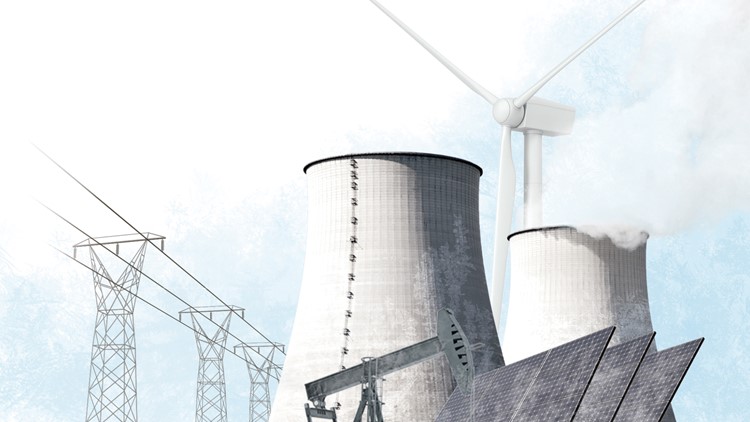DALLAS — The relief was palpable in Kenneth Mercado's voice on Feb. 18, as he talked about power restoration efforts across Houston.
Mercado, vice president of CenterPoint Energy's electric utility arm, spoke on the phone hours after his business line finally managed to get power back up for millions of customers across Houston after many went days in the dark amid freezing weather.
"It creates a lot of tense moments," Mercado said. "Our job is to keep the power going, so this has been a challenging, tough, intense week. But it does feel a lot better today."
Even on that day of relief, Mercado, like many others, was looking ahead at solutions. CenterPoint owns and operates the network of electricity transmission and distribution assets that covers most of Houston. As power generation assets upstream fell offline due to the harsh weather, CenterPoint had to cut power to most of its customers on orders from the Electric Reliability Council of Texas, which manages the state’s power grid.
Mercado acknowledged that CenterPoint had work to do to regain the trust of those to whom it distributed electricity and that it was already working on ways to manage events like the February freeze better.
There’s a lot the state and industry can do to prevent a repeat of February’s blackouts, but no solution is going to be perfect, said Bernadette Johnson, senior vice president of power and renewables for Austin-based Enverus.
“There’s a lot of levers you could pull,” Johnson said. “But all these things cost money.”
The question then centers around how much money to spend on something that only happens once a decade, Johnson said.
There’s a simple answer, said Andrew Barth, partner and co-founder of Houston-based energy management firm CSD Energy Advisors LLC.
“When you have the loss of life involved, there’s no price too significant to move forward with a solution,” Barth said. “The question becomes: Who’s going to bear that burden?”
Ultimately, the costs for projects at the scale needed for this kind of reliability would probably fall back to the end-users — the companies and individuals who consume that power — Barth said.
Texas’ grid is an energy-only market, which means there’s no inherent compensation to generators for keeping capacity or reliability on hand. They only get paid for the megawatts they generate, not the ones they could generate if things were to go wrong, as in some other states’ capacity markets.
After an event like this one, it’s a good idea to take a look at what markets like this do well and what they don’t do well, said Carey King, assistant director of the Energy Institute at the University of Texas at Austin.
“Markets are good at minimizing costs under normal circumstances of operation,” King said. “They’re not as good at thinking about extreme events, particularly when there’s an externality like, in this case, public health and safety concerns.”
To read the rest of this story, click here.



